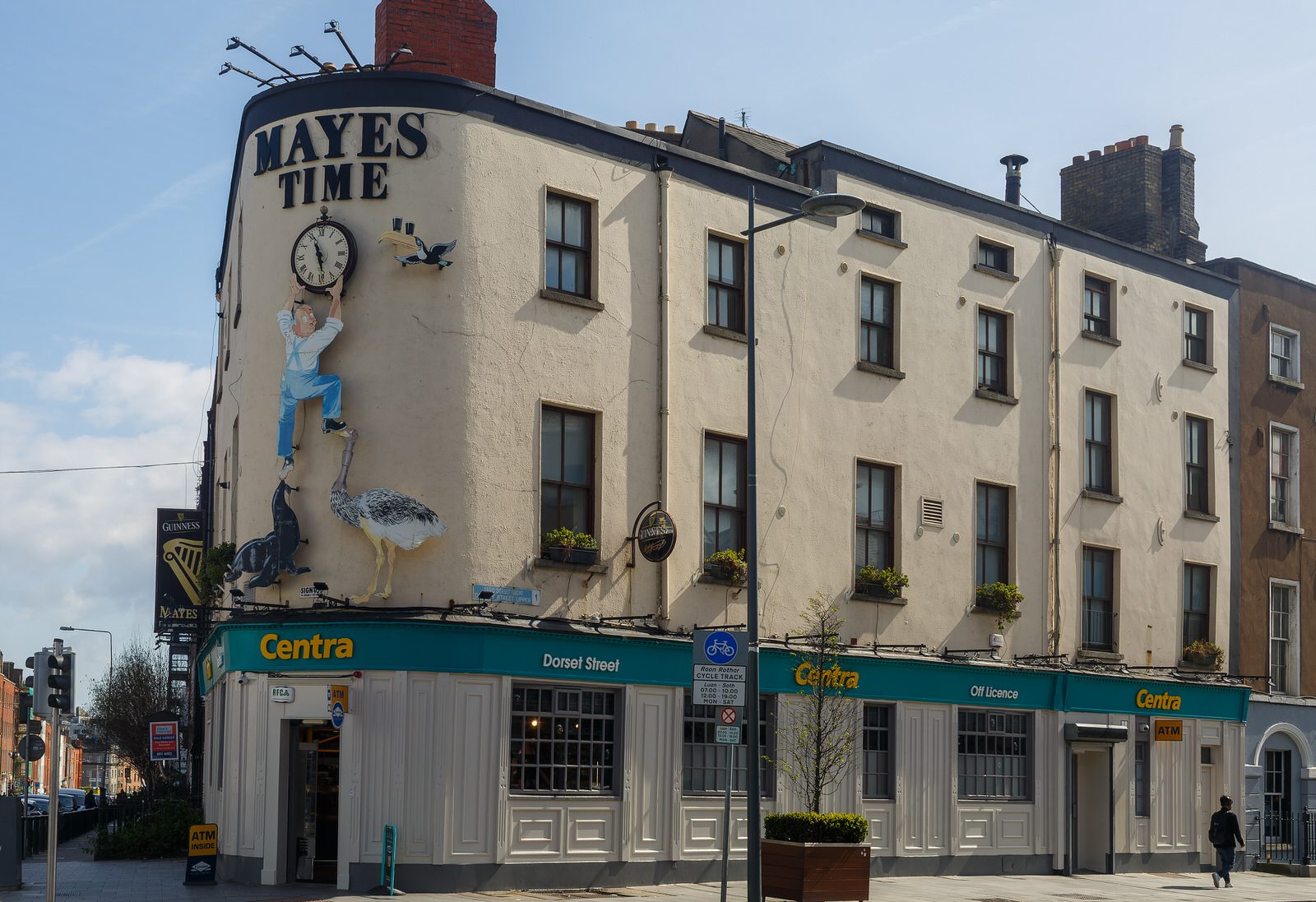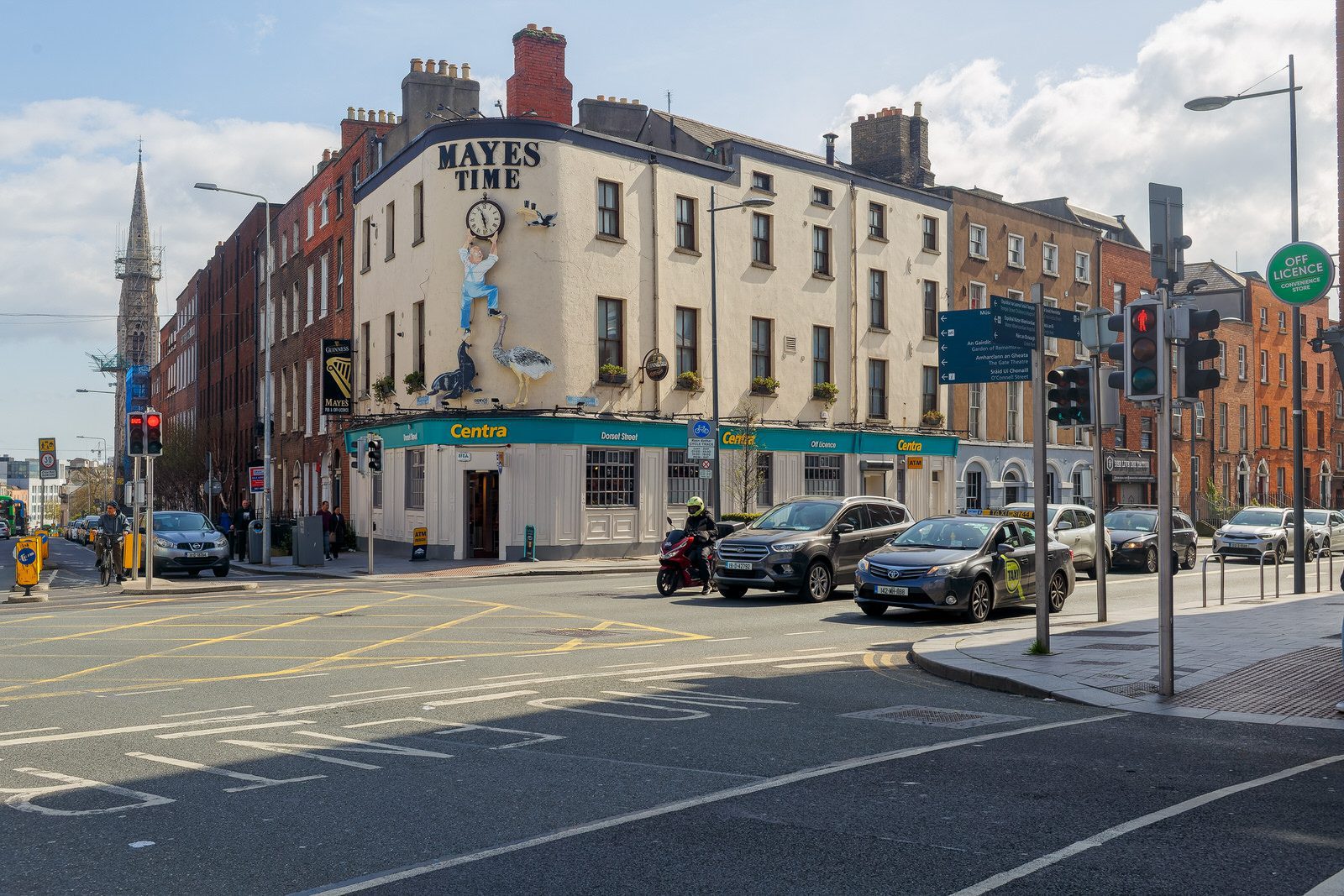DIFFERENT SIGNS DIFFERENT SPELLING
This diner is housed in a forty foot container and according to local legend the Deeke’s neon sign cost 3,000 euro. The owner is Tony McDonald, aka Deeke Rivers.
THE HEADLESS PHOTO BLOG
by infomatique
DIFFERENT SIGNS DIFFERENT SPELLING
This diner is housed in a forty foot container and according to local legend the Deeke’s neon sign cost 3,000 euro. The owner is Tony McDonald, aka Deeke Rivers.
![DIFFERENT SIGNS DIFFERENT SPELLING [DEKE'S DINER OR IS IT DEEKE'S DINER]-221685-1 DIFFERENT SIGNS DIFFERENT SPELLING [DEKE'S DINER OR IS IT DEEKE'S DINER] 002](https://excellentstreetimages.com/2023HeadlessPhotoBlogWordPress/wp-content/uploads/2023/08/DIFFERENT-SIGNS-DIFFERENT-SPELLING-DEKES-DINER-OR-IS-IT-DEEKES-DINER-221685-1-1600x1066.jpg)
![DIFFERENT SIGNS DIFFERENT SPELLING [DEKE'S DINER OR IS IT DEEKE'S DINER]-221686-1 DIFFERENT SIGNS DIFFERENT SPELLING [DEKE'S DINER OR IS IT DEEKE'S DINER] 001](https://excellentstreetimages.com/2023HeadlessPhotoBlogWordPress/wp-content/uploads/2023/08/DIFFERENT-SIGNS-DIFFERENT-SPELLING-DEKES-DINER-OR-IS-IT-DEEKES-DINER-221686-1-1600x1066.jpg)
by infomatique
PHOTOGRAPHED 25 AUGUST 2023
Ringsend Public Library is an art deco style public library in Ringsend, Dublin designed by Robert Sorley Lawrie working in the city architect’s office under Horace O’Rourke.
This building was one of four similar libraries built by Dublin Corporation between 1935 and 1940 in the Dublin suburbs of Phibsborough, Ringsend, Drumcondra and Inchicore.
![RINGSEND LIBRARY [AN ART DECO BUILDING BY ROBERT SORLEY LAWRIE]-221663-1 RINGSEND LIBRARY [AN ART DECO BUILDING BY ROBERT SORLEY LAWRIE] 010](https://excellentstreetimages.com/2023HeadlessPhotoBlogWordPress/wp-content/uploads/2023/08/RINGSEND-LIBRARY-AN-ART-DECO-BUILDING-BY-ROBERT-SORLEY-LAWRIE-221663-1-1600x1066.jpg)
![RINGSEND LIBRARY [AN ART DECO BUILDING BY ROBERT SORLEY LAWRIE]-221664-1 RINGSEND LIBRARY [AN ART DECO BUILDING BY ROBERT SORLEY LAWRIE] 009](https://excellentstreetimages.com/2023HeadlessPhotoBlogWordPress/wp-content/uploads/2023/08/RINGSEND-LIBRARY-AN-ART-DECO-BUILDING-BY-ROBERT-SORLEY-LAWRIE-221664-1-1600x1066.jpg)
![RINGSEND LIBRARY [AN ART DECO BUILDING BY ROBERT SORLEY LAWRIE]-221665-1 RINGSEND LIBRARY [AN ART DECO BUILDING BY ROBERT SORLEY LAWRIE] 008](https://excellentstreetimages.com/2023HeadlessPhotoBlogWordPress/wp-content/uploads/2023/08/RINGSEND-LIBRARY-AN-ART-DECO-BUILDING-BY-ROBERT-SORLEY-LAWRIE-221665-1-1600x1066.jpg)
![RINGSEND LIBRARY [AN ART DECO BUILDING BY ROBERT SORLEY LAWRIE]-221666-1 RINGSEND LIBRARY [AN ART DECO BUILDING BY ROBERT SORLEY LAWRIE] 007](https://excellentstreetimages.com/2023HeadlessPhotoBlogWordPress/wp-content/uploads/2023/08/RINGSEND-LIBRARY-AN-ART-DECO-BUILDING-BY-ROBERT-SORLEY-LAWRIE-221666-1-1600x1066.jpg)
![RINGSEND LIBRARY [AN ART DECO BUILDING BY ROBERT SORLEY LAWRIE]-221667-1 RINGSEND LIBRARY [AN ART DECO BUILDING BY ROBERT SORLEY LAWRIE] 006](https://excellentstreetimages.com/2023HeadlessPhotoBlogWordPress/wp-content/uploads/2023/08/RINGSEND-LIBRARY-AN-ART-DECO-BUILDING-BY-ROBERT-SORLEY-LAWRIE-221667-1-1600x1066.jpg)
![RINGSEND LIBRARY [AN ART DECO BUILDING BY ROBERT SORLEY LAWRIE]-221658-1 RINGSEND LIBRARY [AN ART DECO BUILDING BY ROBERT SORLEY LAWRIE] 005](https://excellentstreetimages.com/2023HeadlessPhotoBlogWordPress/wp-content/uploads/2023/08/RINGSEND-LIBRARY-AN-ART-DECO-BUILDING-BY-ROBERT-SORLEY-LAWRIE-221658-1-1600x1066.jpg)
![RINGSEND LIBRARY [AN ART DECO BUILDING BY ROBERT SORLEY LAWRIE]-221659-1 RINGSEND LIBRARY [AN ART DECO BUILDING BY ROBERT SORLEY LAWRIE] 004](https://excellentstreetimages.com/2023HeadlessPhotoBlogWordPress/wp-content/uploads/2023/08/RINGSEND-LIBRARY-AN-ART-DECO-BUILDING-BY-ROBERT-SORLEY-LAWRIE-221659-1-1567x1045.jpg)
![RINGSEND LIBRARY [AN ART DECO BUILDING BY ROBERT SORLEY LAWRIE]-221660-1 RINGSEND LIBRARY [AN ART DECO BUILDING BY ROBERT SORLEY LAWRIE] 003](https://excellentstreetimages.com/2023HeadlessPhotoBlogWordPress/wp-content/uploads/2023/08/RINGSEND-LIBRARY-AN-ART-DECO-BUILDING-BY-ROBERT-SORLEY-LAWRIE-221660-1-1600x1066.jpg)
![RINGSEND LIBRARY [AN ART DECO BUILDING BY ROBERT SORLEY LAWRIE]-221661-1 RINGSEND LIBRARY [AN ART DECO BUILDING BY ROBERT SORLEY LAWRIE] 002](https://excellentstreetimages.com/2023HeadlessPhotoBlogWordPress/wp-content/uploads/2023/08/RINGSEND-LIBRARY-AN-ART-DECO-BUILDING-BY-ROBERT-SORLEY-LAWRIE-221661-1-1573x1049.jpg)
![RINGSEND LIBRARY [AN ART DECO BUILDING BY ROBERT SORLEY LAWRIE]-221662-1 RINGSEND LIBRARY [AN ART DECO BUILDING BY ROBERT SORLEY LAWRIE] 001](https://excellentstreetimages.com/2023HeadlessPhotoBlogWordPress/wp-content/uploads/2023/08/RINGSEND-LIBRARY-AN-ART-DECO-BUILDING-BY-ROBERT-SORLEY-LAWRIE-221662-1-1600x1066.jpg)
by infomatique
COAST ROAD
A well maintained brick cottage thatched with Oats (straw). Two chimneys. Rough cast plaster and part clay exterior. Uncoloured. Modern panelled door. Rectangular wooden framed casement windows.
Thatching is the craft of building a roof with dry vegetation such as straw, water reed, sedge (Cladium mariscus), rushes, heather, or palm branches, layering the vegetation so as to shed water away from the inner roof. Since the bulk of the vegetation stays dry and is densely packed—trapping air—thatching also functions as insulation. It is a very old roofing method and has been used in both tropical and temperate climates. Thatch is still employed by builders in developing countries, usually with low-cost local vegetation. By contrast, in some developed countries it is the choice of some affluent people who desire a rustic look for their home, would like a more ecologically friendly roof, or who have purchased an originally thatched abode.
Years ago, thatching straw was the by-product of the cereal production e.g. wheat, rye and even oat straw has been used to thatch roofs. Wheat as the toughest (and probably longest lasting as often Winter sown) became the norm but now it is no longer a by-product.
![A WELL MAINTAINED THATCHED COTTAGE IN BALDOYLE [COAST ROAD]-221572-1 A WELL MAINTAINED THATCHED COTTAGE IN BALDOYLE [COAST ROAD] 002](https://excellentstreetimages.com/2023HeadlessPhotoBlogWordPress/wp-content/uploads/2023/08/A-WELL-MAINTAINED-THATCHED-COTTAGE-IN-BALDOYLE-COAST-ROAD-221572-1-1600x1066.jpg)
![A WELL MAINTAINED THATCHED COTTAGE IN BALDOYLE [COAST ROAD]-221573-1 A WELL MAINTAINED THATCHED COTTAGE IN BALDOYLE [COAST ROAD] 001](https://excellentstreetimages.com/2023HeadlessPhotoBlogWordPress/wp-content/uploads/2023/08/A-WELL-MAINTAINED-THATCHED-COTTAGE-IN-BALDOYLE-COAST-ROAD-221573-1-1600x1066.jpg)
by infomatique
NOW A CENTRA – AT LEAST THEY KEPT THE CLOCK
Late in May 2021 is was announced that the iconic Mayes Pub on Dorset would cease trading. Since then I was not paying attention so I was really surprised to discover that the building was now home the a Centra. I suppose that the good news is that they retained the clock.
Centra is a convenience shop chain that operates throughout Ireland. The chain operates as a symbol group owned by Musgrave Group, the food wholesaler, meaning the stores are all owned by individual franchisees.
The chain has three different formats available to franchisees — smaller Quick Stop outlets, mid-sized Foodmarkets, and larger Supermarkets. The majority of the stores follow the Quick Stop format, or are simply branded Centra, as Musgrave also offers the SuperValu format, which is geared towards larger supermarkets. There are currently approximately 480 Centra stores in the twenty six counties and approximately 80 in Northern Ireland. In 2016, Centra posted a 3% increase in sales to €1.59bn.Centra’s main competitors are Gala, Spar and Londis, as well as a number of smaller groups such as Costcutter.
The chain was originally launched in the Republic of Ireland as “VG” in 1960. In 1979, the VG chain was rebranded SuperValu with the smaller outlets subsequently rebranded as Centra. The company brought both of these stores to Northern Ireland, the latter through the acquisition and subsequent rebranding of Wellworths stores.


by infomatique
A REALLY UGLY SITE ON DORSET STREET
I live near Dorset Street and I believe it to be one of the ugliest streets in Dublin and the George Cosgrave Car Sales building was, and still is, one of the worst examples of how bad the street can be.
I should mention that George Cosgrave died in August 2021. George was well known for his car sales on Dorset Street where he traded for 37 years before moving to Clarehall. George was also an active member of The Irish Jaguar & Daimler Club.
Some early Georgian houses are dotted along the street, primarily identifiable by the stone Gibbsian doorcase entrances, and close to the crossroads with Blessington and North Frederick Streets. Much of the street redeveloped during the Victorian era, with a number of significant buildings built, such as the Gothic style stone-built Dominican priory, designed by J. L. Robinson in 1884–87 at the corner of Dominick Street, while across from it is the red brick Italianette former fire station, designed by C. J. McCarthy and completed in 1903. Much of the street consists of vernacular Victorian terraces, with shops opening straight onto footpaths at ground-floor level. During the latter part of the twentieth century, stretches of the street were again redeveloped by Dublin Corporation for social housing flat complexes near Dominick Street.
![GEORGE COSGRAVE CAR SALES WAS BASED HERE [WAS IN BUSINESS FOR 37 YEARS]-216529-1 GEORGE COSGRAVE CAR SALES WAS BASED HERE 004](https://excellentstreetimages.com/2023HeadlessPhotoBlogWordPress/wp-content/uploads/2023/04/GEORGE-COSGRAVE-CAR-SALES-WAS-BASED-HERE-WAS-IN-BUSINESS-FOR-37-YEARS-216529-1-1422x1067.jpg)
![GEORGE COSGRAVE CAR SALES WAS BASED HERE [WAS IN BUSINESS FOR 37 YEARS]-216532-1 GEORGE COSGRAVE CAR SALES WAS BASED HERE 002](https://excellentstreetimages.com/2023HeadlessPhotoBlogWordPress/wp-content/uploads/2023/04/GEORGE-COSGRAVE-CAR-SALES-WAS-BASED-HERE-WAS-IN-BUSINESS-FOR-37-YEARS-216532-1-1422x1067.jpg)
![GEORGE COSGRAVE CAR SALES WAS BASED HERE [WAS IN BUSINESS FOR 37 YEARS]-216531-1 GEORGE COSGRAVE CAR SALES WAS BASED HERE 001](https://excellentstreetimages.com/2023HeadlessPhotoBlogWordPress/wp-content/uploads/2023/04/GEORGE-COSGRAVE-CAR-SALES-WAS-BASED-HERE-WAS-IN-BUSINESS-FOR-37-YEARS-216531-1-1422x1067.jpg)
![GEORGE COSGRAVE CAR SALES WAS BASED HERE [WAS IN BUSINESS FOR 37 YEARS]-216530-1 GEORGE COSGRAVE CAR SALES WAS BASED HERE 003](https://excellentstreetimages.com/2023HeadlessPhotoBlogWordPress/wp-content/uploads/2023/04/GEORGE-COSGRAVE-CAR-SALES-WAS-BASED-HERE-WAS-IN-BUSINESS-FOR-37-YEARS-216530-1-1422x1067.jpg)